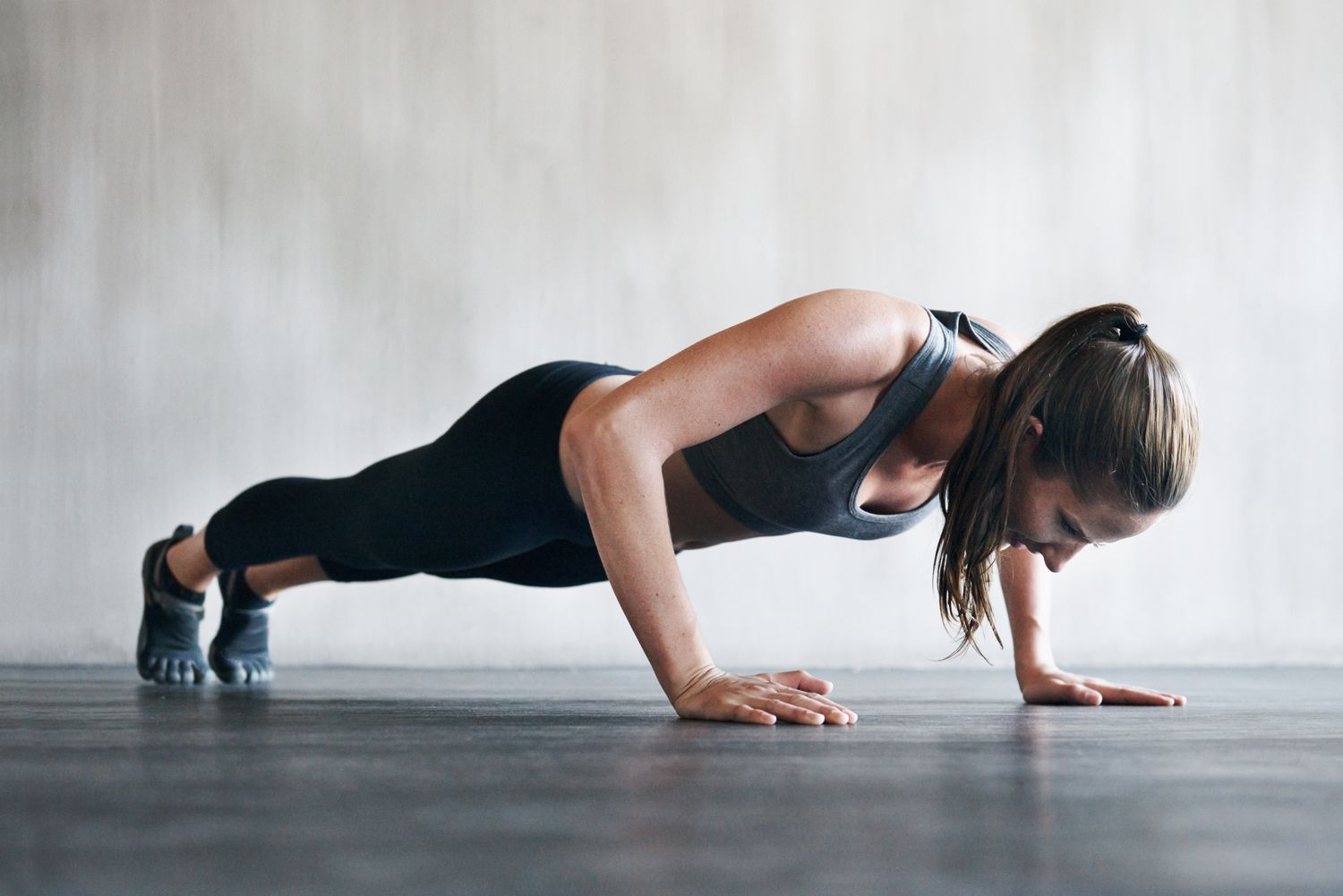Table of Contents
Push-ups are one of the most basic yet effective exercises for building upper body and core strength — but many women wonder, “How many push-ups should I actually be able to do?” The answer depends on several factors including age, fitness level, and personal health goals. In this article, fitness experts weigh in on what’s realistic, what’s ideal, and how to work toward improvement.
For beginners, doing 5–10 push-ups with good form is a strong starting point. As you build strength and consistency, aiming for 15–20 push-ups becomes a solid goal for overall fitness. More advanced athletes may target 30+ reps, especially if training for specific sports or military standards.
Experts highlight that quality matters more than quantity. Proper form helps prevent injury and ensures that you’re activating the right muscle groups — including the chest, shoulders, arms, and core. Modified push-ups (like knee push-ups or incline push-ups) are great stepping stones and can still deliver powerful benefits.
The article also includes charts and expert tips tailored by age group and training level. Whether you’re in your 20s or your 60s, consistent strength training can help you improve your numbers and overall health.
Push-ups aren’t just about upper body strength — they’re a measure of endurance, mental toughness, and progress over time. So instead of chasing someone else’s numbers, focus on your own journey. With expert-backed advice and a commitment to regular practice, you’ll see real gains.
Basically, push-ups are a worthwhile exercise, but they’re not the end-all-be-all of your health and fitness status. “One of the biggest issues with this sensationalized trend is that it feels very defeatist to women who can’t accomplish it and are otherwise strong,” says Shannon Ritchey, DPT. “Physics, gravity, and body proportions all play a role in a person’s ability to do a push-up and how many they can do, so 11 push-ups may not always be a reliable indicator for a person’s overall strength.”
For example, if you have long arms, you have longer levers and further to lower, so there will be more challenge and load to your muscles in a push-up, Ritchey says. If you’re larger chested, you’ll also have more weight to move, ultimately making a push-up more challenging.
“Eleven push-ups may not always be a reliable indicator for a person’s overall strength.”
In other words, 11 push-ups isn’t a one-size-fits-all recommendation. “People get too wrapped up in the specific exercise and forget that the purpose of the exercise is to increase strength, muscle, and potentially endurance in the upper body,” Ritchey says. “If you can choose an exercise that better suits your body and physicality but achieves the same goals (like a bench press, chest press, or pec fly), that’s what matters.”
So no, all women do not need to be able to do 11 push-ups, per our experts. “‘Need’ is such a loaded word, because there is nothing we need [to do], but I do think being able to do 11 push-ups can be a really empowering benchmark for functional strength,” Maddison Rotner, CPT, says.
So, how many push-ups do women really need to do for health benefits?
Again, there isn’t a universal number of push-ups every woman needs to be able to do. “Any consistent push-up practice will yield benefits, especially if you’re starting from zero, and even doing two to five high-quality push-ups a day can improve muscular strength, posture, and stamina,” Pelc Graca says. “It’s more about progress over perfection, so instead of a hard number, the goal should be increasing what you can do over time—whether that’s three, eight, 11, or beyond.”
If you are goal-oriented, these are the targets our experts recommend you work toward:
Overall Health: For overall health, including cardiovascular support and bone density, working up to 10 to 15 full push-ups is a good goal, according to Pelc Graca. Why? It promotes a solid foundation of upper-body and core strength.
Strength: For advanced strength goals and muscle hypertrophy, aim for 15 to 20 (or more) full push-ups, says Pelc Graca. It’s also beneficial to incorporate variations like decline push-ups or push-ups with shoulder taps. Why? It builds muscular endurance and challenges your muscles to perform even when fatigued.
That said, even a few push-ups a day can offer real benefits if you’re doing them with proper form. “Five high-quality push-ups will do more for you than 20 push-ups where you’re compromising form, so I’d start with what challenges you and aim for consistency and progression over time,” Rotner says.
“Doing two to five high-quality push-ups a day can improve muscular strength, posture, and stamina.”
And if you need to do push-ups on your knees, go for it. “Doing push-ups on your toes loads the upper body more than on your knees, however, when we look at what improves strength and muscle, what matters is that you are significantly challenging the targeted muscle group close to failure, no matter what position your body is in,” Ritchey says. “If push-ups on your knees significantly load the upper body and get you close to failure, that variation will absolutely be an effective option for building strength, muscle, and endurance in the upper body.”
How To Do A Push-Up With Proper Form
- Start in a high plank position, with feet slightly wider than hip-width apart and shoulders stacked over wrists to avoid stress on shoulders and wrist joints.
- Keep ribs in, core engaged, and butt tucked under to maintain alignment and protect lower back.
- Lower body down with elbows pointing 45-degrees away from body and gaze just in front of hands.
- Then, push into palms and drive body back up, maintaining same shape and alignment. That’s 1 rep.
Once form is locked-in and you’re ready to increase reps, Ritchey, Rotner, and Pelc Graca suggest the following tips:
- Start with incline push-ups. Put your hands on a sturdy bench, table, or kitchen counter to build form and core engagement. Alternatively, you can do push-ups on your knees.
- Use tempo training. Instead of whipping through reps, build strength by moving slowly on the way down and explosively on the way up. If needed, complete the lowering phase on your toes and drop to your knees on the ascent.
- Train your entire upper body. Push-ups are great, but you should also incorporate additional moves in your training such as planks, chest presses, and rows to build strength in the triceps, chest, and core. When overall strength improves, push-ups improve.
- Be consistent. Consistency is crucial for building strength and endurance. Even three to five reps a day can help (or 11, if that’s your goal).
- Set micro-goals. Aim to improve your push-up count by one to two reps every week.



